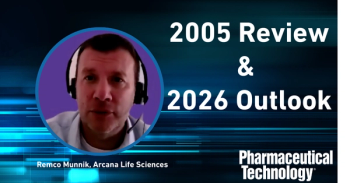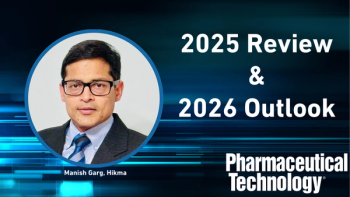
PharmSource's Jim Miller Highlights Strong Growth and Opportunity for CMC Sourcing
Contract services providers gained a valuable look into major market conditions, offshoring trends, and 2006 growth opportunities during a morning presentation entitled "CMC Sourcing in transition: Consolidation, Offshoring, and the Market Outlook," presented by Jim Miller. Miller is president of PharmSource (Springfield, VA, www.pharmsource.com), publisher of the Bio/Pharmaceutical Outsourcing , and contributing editor of Pharmaceutical Technology.
Contract services providers attending the American Association of Pharmaceutical Scientists' (AAPS) Annual Meeting gained a valuable look into major market conditions, offshoring trends, and 2006 growth opportunities during a morning presentation entitled "CMC Sourcing in Transition: Consolidation, Offshoring, and the Market Outlook," presented by Jim Miller. Miller is president of PharmSource (Springfield, VA,
Acknowledging that 2005 has generally been a good year for all segments of product development and manufacturing, Miller emphasized that leading this growth has been the "booming demand" for toxicology and pharmacology services. Phase I and Phase II proof-of-concept stages had particularly strong growth. Although there were some laboratory capacity shortages at these stages as well as reported increases in the number of backlogs by clinical contract research organizations, "the industry is responding with additional capacity," says Miller and the industry can anticipate to see evidence of this increase late this year and early next year.
The increased number of backlogs and the growth rate of Phase I and Phase II services are of particular interest as the industry continues to witness the sharp drop off in the percentage of compounds failing to progress past Phase II development (see chart below). Miller noted that these data support the currently reported 75% failure rate from Phase II to Phase III, up from 60% in the recent past. "To a certain extent it contradicts what we have seen in terms of the growth in the CRO backlogs," says Miller. Nonetheless, he projects an increase in Phase III candidates. "Clearly there is an opportunity there."
Spending in research and development also continues to be strong, with increases by Big Pharma companies up by 8% during the first half of the year and by mid-pharmaceutical companies up by 11%.
Market strength is also driving activity in mergers and acquisitions, particularly in the number of what Miller calls "portal acquisitions" by pharmaceutical suppliers overseas. Buyers have become sellers as the industry begins to see a rise in the number of companies in India, for example, that have bought small US facilities, particularly in CMC services.
Big Pharma is also expected to invest in offshoring activity, says Miller. Although cost savings is the overall driver in this trend, factors such as measurable performance, the availability of clinical trial subjects, and local market opportunities also play key roles (see Pharmaceutical Technology/PharmSource industry survey in our
The demand for outsourcing services and the increased merger and acquisition activity have also led to evolving CMC business models relating process integration and supply chain integration (see table below). Miller detailed the concept, clinical benefits and risks and contractor benefits and provided current examples of companies operating under each business model.
Taking all factors into consideration, Miller predicted strong year-end results for 2005 and an equally strong market in 2006.
Newsletter
Get the essential updates shaping the future of pharma manufacturing and compliance—subscribe today to Pharmaceutical Technology and never miss a breakthrough.




